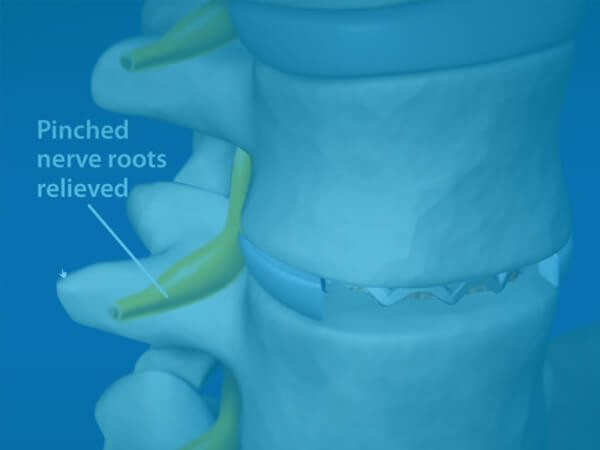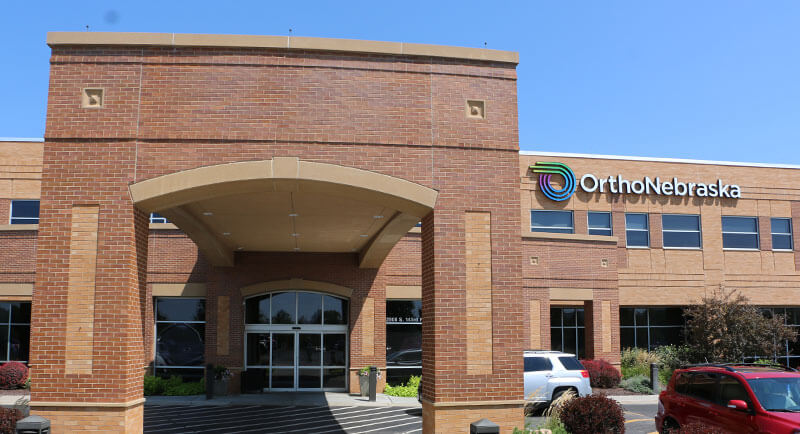What is ALIF Spine Fusion?
The surgeon enters the spinal column from the front of the body (anterior), using small incisions and specialized instruments rather than open surgery. Your surgeon and a co-surgeon (general abdominal surgeon with special expertise in exposing the spine) carefully move and protect the abdominal contents and blood vessels. Then, your surgeon removes the problem disc and places an implant filled with bone graft that will then fuse itself into place over time after surgery.
Who should have an ALIF Spine Fusion?
OrthoNebraska might recommend ALIF spine surgery for anyone who hasn’t gotten the pain relief they are seeking from medications, physical therapy or injections. Depending on the cause of a patient’s pain, it can be used to treat many conditions that are the underlying cause of back or neck pain, including but not limited to:
- Instability from previous surgery or other conditions
- Spinal stenosis
- Degenerative disc disease or facet arthritis
- Scoliosis
- Spondylolisthesis
- Previous fusion surgeries that did not fuse correctly
- Chronic or frequent herniated discs
The standard approach for spinal stenosis or pinched nerves includes traditional laminectomy to achieve a direct decompression. However, ALIF is often used to achieve an “indirect decompression” and – in specific situations – can be used in the case of pinched nerves or spinal stenosis. ALIF has the potential to eliminate the need to perform some direct decompression, or other procedures typically included during spinal decompression and fusion.
How well does ALIF Spine Fusion Work?
Research has indicated the success in terms of the fusion rate exceeds 90 percent, and may be as high as 98 percent. Despite successful fusion, some patients may experience ongoing pain secondary to surgery, or from other areas of the spine. A small number of patients with successful fusion do not experience significant pain relief – about 5 percent. Overall, about 85 percent of patients can be expected to have significant pain relief and report they are happy they had the procedure.
What can I expect when I get an ALIF Spine Fusion?
You will need a pre-surgical physical to make any necessary accommodations based on your health history and may need additional appointments with your cardiologist or pulmonologist if you have conditions that would impact this surgery. When you arrive at the hospital the day of your procedure, you’ll speak to your surgeon and anesthesiologist. You are put to sleep (general anesthesia) and placed on your side for this operation.
Surgical treatment is highly individualized based on a patient’s specific symptoms and anatomy. Prior to your surgery, a detailed discussion will be held with your back or spine surgeon to explain the ALIF procedure, and any additional components of your surgery that may be required based on your symptoms, anatomy or past medical or surgical history.
You can expect to spend one or two nights in the hospital. You should be able to walk the same day and will begin to resume some of your typical activities within a few weeks. Return to full activity can be expected following a healed fusion of the ALIF level, which requires several months. Most of the after care will be focused on local pain and tenderness.
Time off from work, depending on the physical nature of work, is approximately one week, but full recovery and the ability to do rigorous exercise or activity may take several months.







